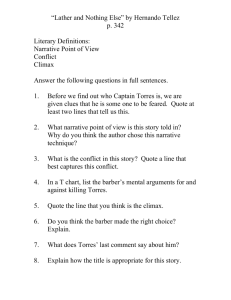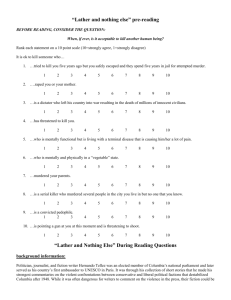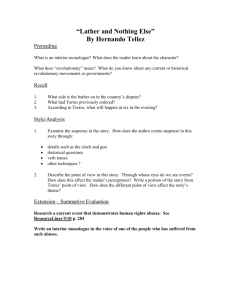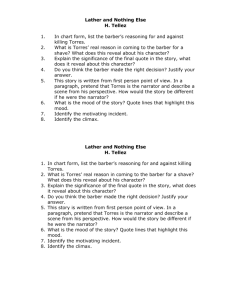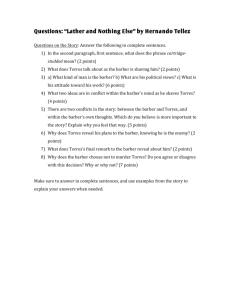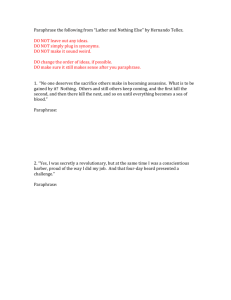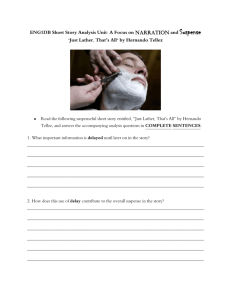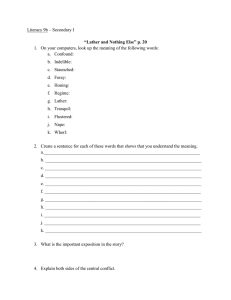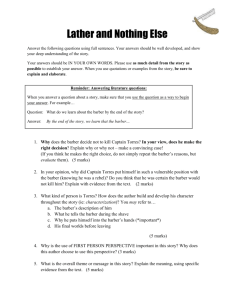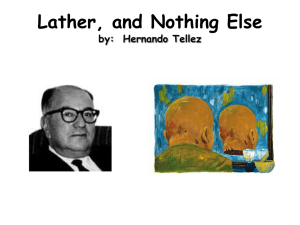Lather
advertisement
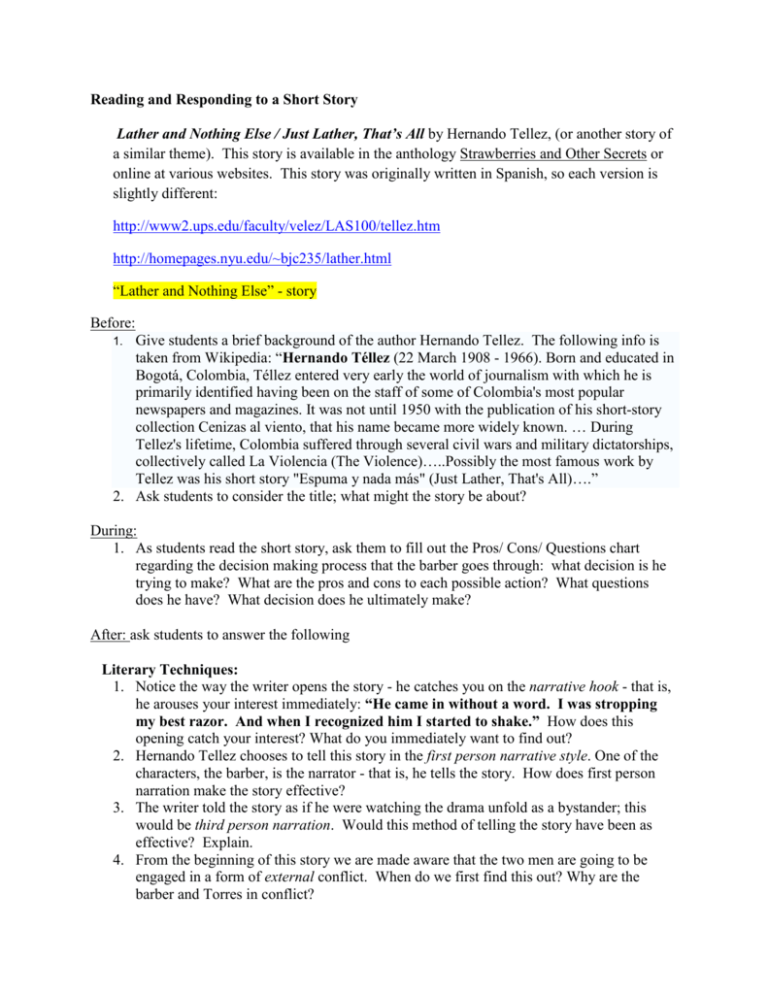
Reading and Responding to a Short Story Lather and Nothing Else / Just Lather, That’s All by Hernando Tellez, (or another story of a similar theme). This story is available in the anthology Strawberries and Other Secrets or online at various websites. This story was originally written in Spanish, so each version is slightly different: http://www2.ups.edu/faculty/velez/LAS100/tellez.htm http://homepages.nyu.edu/~bjc235/lather.html “Lather and Nothing Else” - story Before: Give students a brief background of the author Hernando Tellez. The following info is taken from Wikipedia: “Hernando Téllez (22 March 1908 - 1966). Born and educated in Bogotá, Colombia, Téllez entered very early the world of journalism with which he is primarily identified having been on the staff of some of Colombia's most popular newspapers and magazines. It was not until 1950 with the publication of his short-story collection Cenizas al viento, that his name became more widely known. … During Tellez's lifetime, Colombia suffered through several civil wars and military dictatorships, collectively called La Violencia (The Violence)…..Possibly the most famous work by Tellez was his short story "Espuma y nada más" (Just Lather, That's All)….” 2. Ask students to consider the title; what might the story be about? 1. During: 1. As students read the short story, ask them to fill out the Pros/ Cons/ Questions chart regarding the decision making process that the barber goes through: what decision is he trying to make? What are the pros and cons to each possible action? What questions does he have? What decision does he ultimately make? After: ask students to answer the following Literary Techniques: 1. Notice the way the writer opens the story - he catches you on the narrative hook - that is, he arouses your interest immediately: “He came in without a word. I was stropping my best razor. And when I recognized him I started to shake.” How does this opening catch your interest? What do you immediately want to find out? 2. Hernando Tellez chooses to tell this story in the first person narrative style. One of the characters, the barber, is the narrator - that is, he tells the story. How does first person narration make the story effective? 3. The writer told the story as if he were watching the drama unfold as a bystander; this would be third person narration. Would this method of telling the story have been as effective? Explain. 4. From the beginning of this story we are made aware that the two men are going to be engaged in a form of external conflict. When do we first find this out? Why are the barber and Torres in conflict? 5. The internal conflict, the struggle that goes on within the barber, is the most intense part of the story. Explain why. Key Question / Concepts: 1. The final words of Torres as he leaves the barbershop came as a surprise to the barber and to us. Summarize them. Why are they a surprise? What do they reveal about Captain Torres? 2. Consider the choices made by the barber: he has figured out his options, weighed the pros and cons, and made a well-considered decision. What does he find out at the end that throws new light on this decision? What insight does this give us about decision making?
